What You Should Know About gMed’s Gastroenterology Software
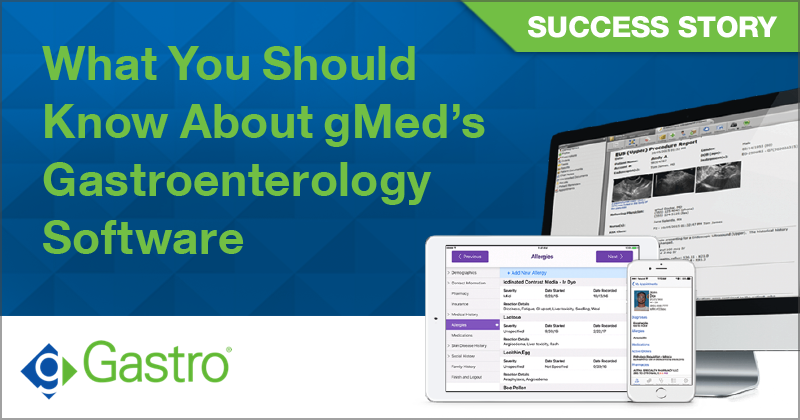
9 gastroenterology notes from Dr. Michael L. Weinstein
We recently connected with Dr. Michael Weinstein to learn more about gMed™’s gastroenterology Electronic Health Records (EHR) system and suite of gastroenterology products utilized by Capital Digestive Care’s physicians and staff.
He shared his perspective on their practice’s transition from their own servers to the cloud in addition to valuable insights regarding the use of their gastroenterology software. Read the takeaways about gMed’s gastroenterology suite of solutions and the collaboration gMed, a Modernizing Medicine® company, has had with Capital Digestive Care since 2012.
1. The Cloud
We needed a robust gastroenterology EHR system that could scale to handle our growing group. Connectivity among the three different components for a gastroenterology group — the practice management system, the gastroenterology EHR system in the office and the endoscopy system — was vital to create a seamless connection between the office and endoscopy center. This was a primary reason for transitioning from our own servers to the cloud.
After switching from the server to the cloud, we save at least 30 percent overall on our IT related costs. This equates to hundreds of thousands of dollars saved and has enhanced connectivity across all of our office locations and endoscopy centers. With the cloud gastroenterology software, we need fewer resources and have experienced phenomenal reliability.
2. gInsights™
Our practice management team frequently uses gInsights, and it has helped with our quality metrics especially as it relates to Merit-based Incentive Payment System (MIPS)* reporting. We believe that planned enhancements to gInsights will further increase our ability to capture our clinical and business data within the system eliminating the need to reference external sources or use additional vendors. Having all the tools in one bucket certainly has its benefits.
3. Flexibility in Documenting History of Present Illness (HPI)
One of the main reasons we selected gMed was the flexibility to document HPI. If I have a patient with a chronic condition, say irritable bowel syndrome (IBS), I can easily bring forward the prior HPI and update it by typing or using the voice-to-text functionality. For follow-up visits on similar complaints, it proves very useful.
One instance where it’s very helpful to bring up the prior note includes when I create my preoperative H and P for endoscopic procedures, particularly if I saw the patient recently. I can easily bring forward the visit notes from the last week or two. It’s nice to have the options to type, use the voice-to-text functionality or even document using a combination of the two based on each partners preferences. It provides the flexibility to easily create HPI.
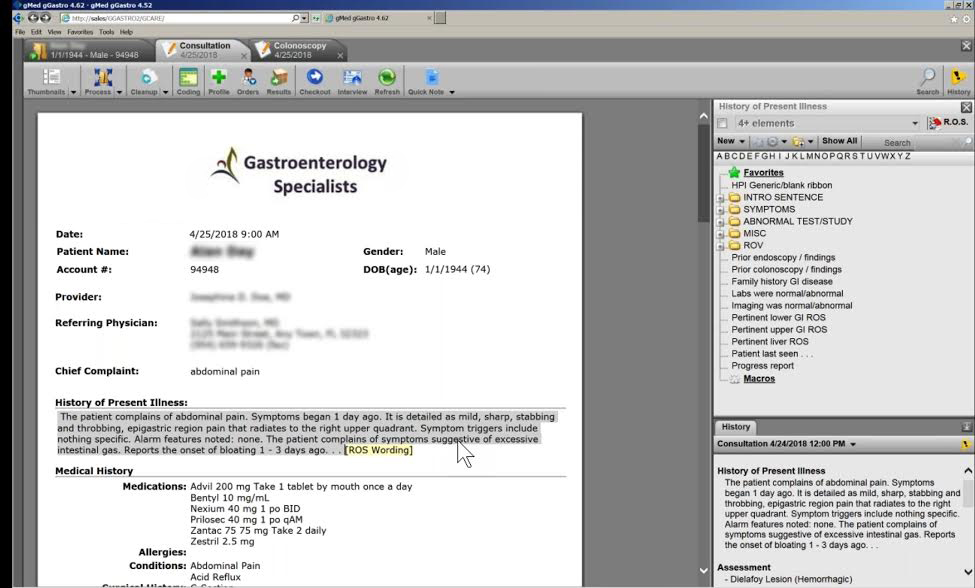
4. Documenting a Plan
Our physicians use the pick list for some conditions and macros for others. If you know just a few letters of the condition, the system quickly populates a list of orders that contain a phrase or part of a word. Macros are good for some conditions like abnormal liver enzymes when a whole panel of tests typically go into the orders. Depending on the condition, we use a combination of a pick list and macros, both of which help us more efficiently get our plan documented. Then it goes to our staff who can see those orders at the front desk when patients check out, and our staff can coordinate the rest for our patients.
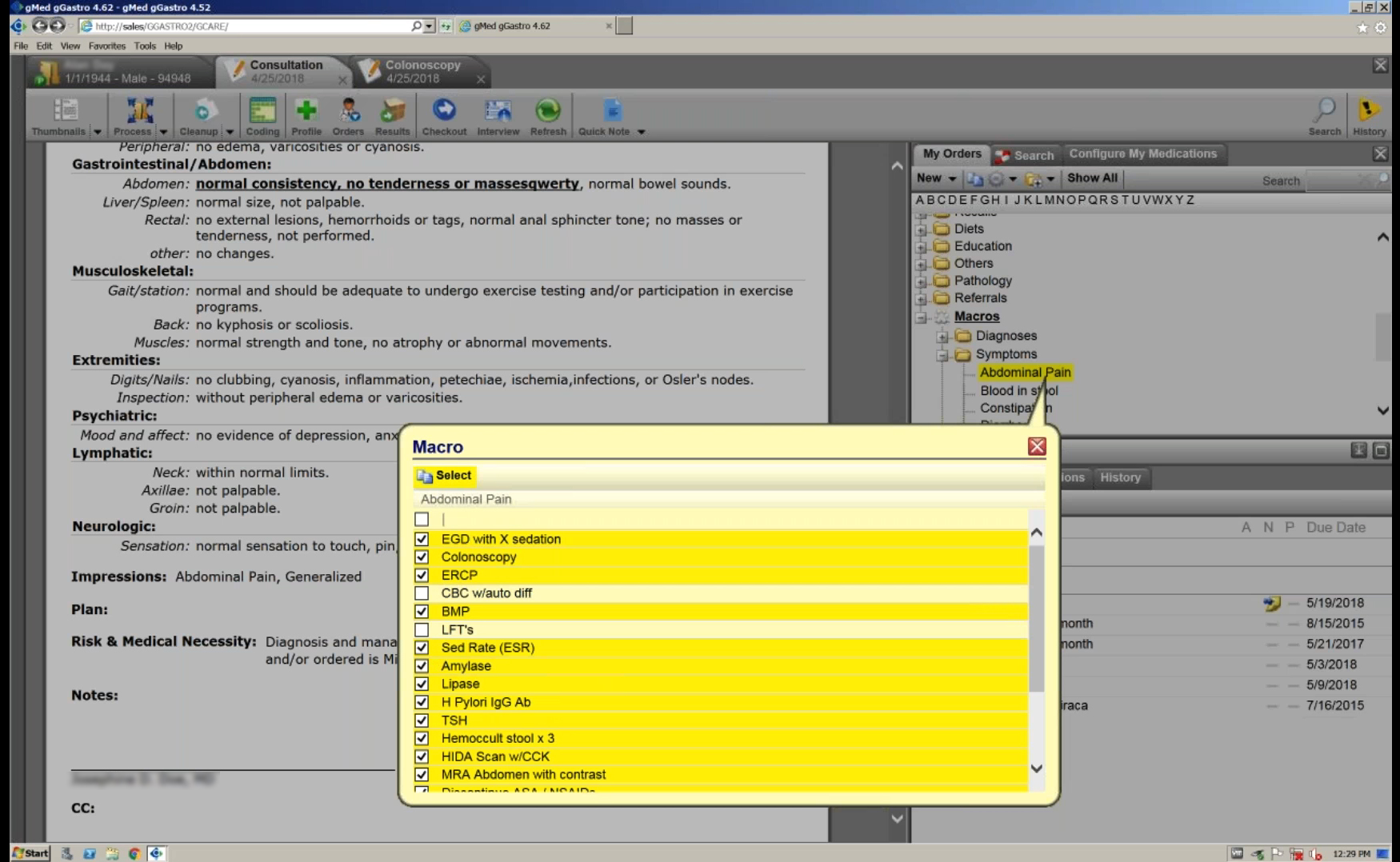
5. Coding Advisor Module
The coding advisor module highlights the areas that may be lacking based on the level chosen. This proves extremely beneficial in helping us pass or avoid coding audits, as well as showing which sections of the note need to have documentation completed. The easy-to-use coding module helps identify whether you have forgotten to include something in the note when you’re getting ready to bill it. It clearly shows if you missed something.
For gastroenterologists who are newer to practicing and may not be as experienced in what defines a level, it proves very useful. Overall, this module helps you to avoid making any glaring coding errors.
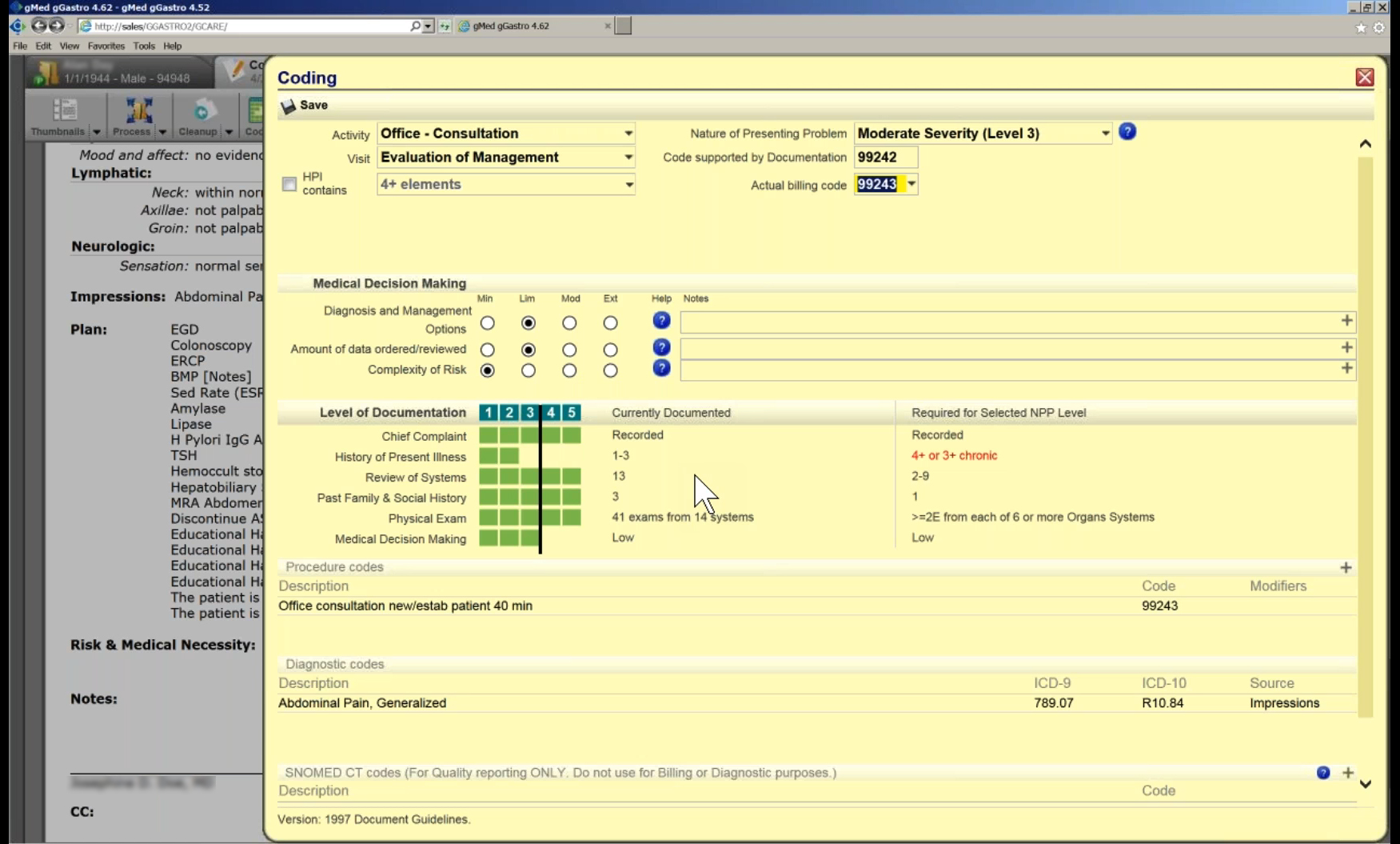
6. Completing an Office Visit Note
As long as the patient’s HPI, review of symptoms and medication list have been updated before I examine a patient, I can complete the note with my assessment and plan before moving on the next patient. I rarely leave the office with unfinished notes. Completing 90% of notes requires just a couple of minutes — it’s very fast.
7. Transfer of Care
This has become increasingly helpful since performing a certain number of transfers of care is now a MIPS measure. This is automated by simply pressing the “process” button in the system. It’s very easy to complete the transfer of care as long as you have direct addresses for your referring physicians.
8. Notes in the Endoscopy Report Writer
We have used the gMed Endoscopy Report Writer system for more than ten years. If I complete a routine procedure with typical therapeutic measures and without any complications, then more often than not I finish my procedure note before the scope is removed from the room for cleaning.
Additionally, Nursing Notes fully integrate into our Endoscopy Report Writer and our anesthesia personnel enter medications in the same nurse’s note. Each of our eight centers has slight variations on how they like to handle this. Some of them document directly in the Nursing Notes while others prefer to use their own paper which can be easily scanned into the note. With the automatic and seamless interface between office and endoscopy center, data can easily be exchanged since we work inside of the same database.
When I finish a report in the endo center, I can then view it while at my office. And when I’m in the endo center, I can see every lab and office note while I’m getting ready to perform a procedure. As physicians, we want the ability to view all that information on one screen. We can do that with gMed’s gastroenterology software. We have no problems exchanging data between one system and another.
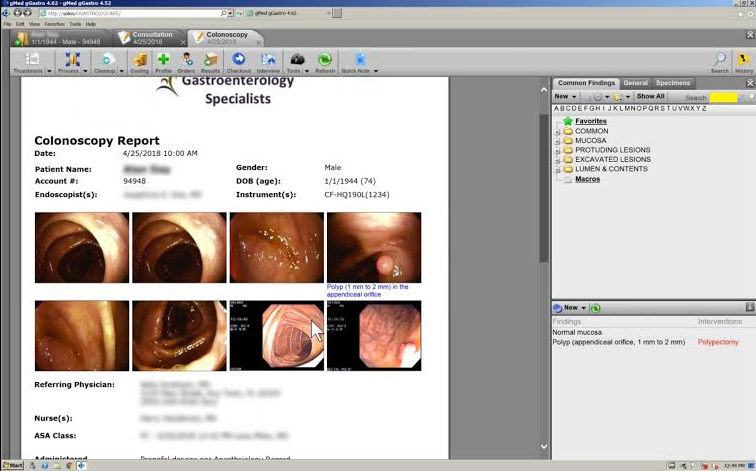
9. Degree of Interoperability
In regards to interoperability, the two items I want to highlight include interfaces with pathology labs and informed consents with our patients. For example, when I complete a procedure, remove a polyp and create a specimen, that information becomes accessible to our laboratory’s information system and can be tracked with barcodes back and forth. The result returns from the lab and goes right into my tasking list, so that I’m aware of results as soon as specimens are signed and our pathologists can access the system for clinical information needed to improve their assessments. For any abnormal results, our pathologists can send notes within the system giving us direct communication. The lab interface has proven extremely beneficial. We also have tools to enhance patient care such as our online informed consent. When a procedure is scheduled, the system picks up the patient’s name sending a secure web link for the corresponding patient education database. Once the patient completes the desired informed consent education, the completed documentation goes back into the chart avoiding the need to repeat procedure explanations before the examination all of which saves our staff time. It happens seamlessly thanks to the interface.
Closing Thoughts on Working with gMed
The type of relationship we have with gMed staff is one that you don’t often encounter with other multi-specialty EHR companies. We’ve been very successful. The ability to interface with other tools and applications has and will continue to help us streamline additional office processes. Other EMR vendors will tend to resist customizing the software and creating interfaces. Often the adjustments are only one way, but with gMed it’s truly a collaborative effort.
